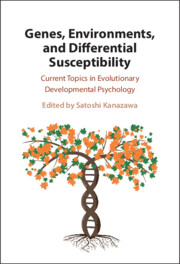 Genes, Environments, and Differential Susceptibility
Genes, Environments, and Differential Susceptibility Book contents
- Genes, Environments, and Differential Susceptibility
- Genes, Environments, and Differential Susceptibility
- Copyright page
- Contents
- Figures
- Tables
- Contributors
- Introduction
- Part I Historical Background and Theoretical Foundations of Jay Belsky’s Work in Evolutionary Developmental Psychology
- Part II Parent–Child Relations and Attachment
- Part III Life-Course Development from Prenatal Environment through Childhood to Adulthood
- Part IV Differential Susceptibility to Environmental Influences
- Chapter 9 Unequal Monks, Unequal Hoods?
- Chapter 10 Child Maltreatment and the Development of Multisystem Resilience
- Chapter 11 Differential Susceptibility and Its Usefulness for the Understanding of Crime and the Rehabilitation of Criminals
- Conclusion
- Afterword
- Biography of Jay Belsky
- Index
- References
Chapter 10 - Child Maltreatment and the Development of Multisystem Resilience
from Part IV - Differential Susceptibility to Environmental Influences
Published online by Cambridge University Press: 04 September 2025
- Genes, Environments, and Differential Susceptibility
- Genes, Environments, and Differential Susceptibility
- Copyright page
- Contents
- Figures
- Tables
- Contributors
- Introduction
- Part I Historical Background and Theoretical Foundations of Jay Belsky’s Work in Evolutionary Developmental Psychology
- Part II Parent–Child Relations and Attachment
- Part III Life-Course Development from Prenatal Environment through Childhood to Adulthood
- Part IV Differential Susceptibility to Environmental Influences
- Chapter 9 Unequal Monks, Unequal Hoods?
- Chapter 10 Child Maltreatment and the Development of Multisystem Resilience
- Chapter 11 Differential Susceptibility and Its Usefulness for the Understanding of Crime and the Rehabilitation of Criminals
- Conclusion
- Afterword
- Biography of Jay Belsky
- Index
- References
Summary
Resilience is conceptualized as a dynamic developmental process encompassing the attainment of positive adaptation despite the exposure to or the experience of significant threat, severe adversity, or trauma that typically constitute major assaults on the processes underlying biological and psychological development (Luthar, Cicchetti & Becker, 2000; Masten & Cicchetti, 2016). The notion of an average expectable environment for promoting normal development connotes that there is a species-specific range of environmental conditions that elicit normal development in humans. Concerns about how childhood adversity impacts developmental processes and mechanisms have captured deep concerns in researchers in the fields of developmental and clinical psychology, developmental psychopathology, evolutionary psychology, molecular genetics, and neuroscience. Child maltreatment exemplifies a pathogenic relational environment that is far beyond the range of what is normally encountered and engenders substantial risk for maladaptation across domains of biological and psychological development. Child maltreatment is implicated in the disruption of multiple biological systems, including neuroendocrine and immunological functioning, neurobiology, and physical and mental health outcomes. Nonetheless, even though there is strong scientific evidence for maladaptation associated with maltreatment, the absence of an average expectable environment does not condemn maltreated children to negative developmental outcomes later in life. Resilience is possible across the life course.
Keywords
Information
- Type
- Chapter
- Information
- Genes, Environments, and Differential SusceptibilityCurrent Topics in Evolutionary Developmental Psychology, pp. 217 - 234Publisher: Cambridge University PressPrint publication year: 2025
References
Accessibility standard: WCAG 2.0 A
Why this information is here
This section outlines the accessibility features of this content - including support for screen readers, full keyboard navigation and high-contrast display options. This may not be relevant for you.Accessibility Information
Content Navigation
Allows you to navigate directly to chapters, sections, or non‐text items through a linked table of contents, reducing the need for extensive scrolling.
Provides an interactive index, letting you go straight to where a term or subject appears in the text without manual searching.
Reading Order & Textual Equivalents
You will encounter all content (including footnotes, captions, etc.) in a clear, sequential flow, making it easier to follow with assistive tools like screen readers.
You get concise descriptions (for images, charts, or media clips), ensuring you do not miss crucial information when visual or audio elements are not accessible.
You get more than just short alt text: you have comprehensive text equivalents, transcripts, captions, or audio descriptions for substantial non‐text content, which is especially helpful for complex visuals or multimedia.
Visual Accessibility
You will still understand key ideas or prompts without relying solely on colour, which is especially helpful if you have colour vision deficiencies.
You benefit from high‐contrast text, which improves legibility if you have low vision or if you are reading in less‐than‐ideal lighting conditions.